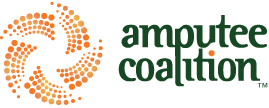SEARCH RESULTS
Use Medicines Wisely A Fact Sheet for Women with Intellectual Disabilities and Self Advocates
- Document
- Posted on: 10.14.2016
- Author(s):
- Food and Drug Administration (FDA) Office of Women's Health
- Abstract
-
This fact sheet provides important information on effective medicine use for women with intellectual disailities. Medicines can treat health problems and help you live a healthier life. When used incorrectly, medicines can also cause serious health problems. Many of these problems can be prevented. Learn four (4) tips to avoid common medicine mistakes.
Including People with Disabilities: Public Health Workforce Competencies
- Website
- Posted on: 09.09.2016
- Author(s):
- Association of University Centers on Disabilities (AUCD)
- Abstract
-
Compared to people without disabilities, people with disabilities are at a higher risk for poor health outcomes such as hypertension, obesity, fall-related injuries, and depression. Knowledge about the health status and public health needs of people with disabilities is essential for addressing these and other health disparities. However, most public health training programs do not include curricula on people with disabilities and methods for including them in core public health efforts. There is a clear need for public health efforts to reduce health disparities among people with disabilities. This may be achieved by building a stronger public health workforce skilled in ways to include people with disabilities in all public health efforts.
Association of University Centers on Disabilities (AUCD)
National Organization on Disability
- Website
- Posted on: 09.09.2016
- Abstract
-
The National Organization on Disability (NOD) is a private, non-profit organization that promotes the full participation and contributions of America's 57 million people with disabilities in all aspects of life. NOD focuses on increasing employment opportunities for the 80-percent of working-age Americans with disabilities who are not employed.
What Local Health Departments Should Know about the Population of People with Disabilities
- Document
- Posted on: 08.07.2015
- Resource Provided By:
- National Association of County & City Health Officials (NACCHO)
- Abstract
-
The National Association of County and City Health Officials' (NACCHO's) Health and Disability Program has been working with local health departments (LHDs) across the United States for several years to encourage the inclusion of people with disabilities in LHD programs, products, outreach, and services. In a recent national assessment of LHDs, NACCHO found that LHDs often misperceive what constitutes the population of people with disabilities.1 Some LHDs reported people with disabilities as those with developmental disabilities or physical disabilities, while others reported that Communities of Color or non-English speaking populations classify as members of the disability population, which is not the case. This fact sheet helps to clarify who people with disabilities are from a public health perspective and provides health-related information to LHDs about the members of this population.
Hospital Community Benefits after the ACA: Addressing Social and Economic Factors that Shape Health
- Document
- Posted on: 03.04.2015
- Resource Provided By:
- The Hilltop Institute
- Author(s):
- Gayle D. Nelson, Jessica S. Skopac, Carl H. Mueller, Teneil K. Wells, Cynthia L. Boddie-Willis
- Abstract
-
The Hilltop Institute's Hospital Community Benefit Program is a central, objective resource for state and local decision makers who seek to ensure that tax exempt hospital community benefit activities are responsive to pressing community health needs.This brief is the ninth in the series, Hospital Community Benefits after the ACA. Earlier briefs address the requirements for tax exempt hospitals established by §9007 of the Affordable Care Act (ACA) and assessed federal and state approaches to community benefit regulation.
Top 5 things to consider when designing an accessible bathroom for wheelchair users.
- Website
- Posted on: 07.11.2014
- Resource Provided By:
- Easter Seals Crossroads
- Abstract
-
There are currently at least 30 million Americans using wheelchairs and those numbers continue to increase as a large population of people with age related challenges look for ways to live independently in their homes.Bathroom safety is one of the number one concerns in making a home accessible because more than 2/3 of emergency room visits are due to bathroom falls.
Accessibility Guidelines for Recreation Facilities
- Website
- Posted on: 09.26.2013
- Resource Provided By:
- US Access Board
- Abstract
-
These guidelines from the U.S. Access Board serve as the basis for standards for new construction and alterations of recreation facilities covered by the Americans with Disabilities Act (ADA).
Guidelines for Assessment of and Intervention with Persons with Disabilities
- Website
- Posted on: 06.13.2012
- Author(s):
- The American Psychological Association (APA) Task Force on Guidelines for Assessment and Treatment of Persons with Disabilities
- Abstract
-
The Guidelines provide suggestions on ways psychologists can make their practices more accessible and disability-sensitive, and how they might enhance their working relationships with clients with disabilities. Additionally, the Guidelines provide information on how psychologists can obtain more education, training and experience with disability-related matters.
AUCD 2012 Hotel Accessibility Checklist
- Document
- Posted on: 05.24.2012
- Resource Provided By:
- Association of University Centers on Disabilities (AUCD)
- Abstract
-
This checklist provides guidance for determining whether a hotel has accessible grounds, paths, and amenities for guests with a variety of disabilities. This checklist was adapted and modified by AUCD to be used for site selection of the 2012 Disability and Health Partners Meeting site hotel.
Accessibility Guidelines for Buildings and Facilities
- Website
- Posted on: 05.24.2012
- Abstract
-
This webpage contains scoping and technical requirements for accessibility to buildings and facilities by individuals with disabilities under the Americans with Disabilities Act (ADA) of 1990. These scoping and technical requirements are to be applied during the design, construction, and alteration of buildings and facilities covered by titles II and III of the ADA to the extent required by regulations issued by Federal agencies, including the Department of Justice and the department of Transportation, under the ADA.
